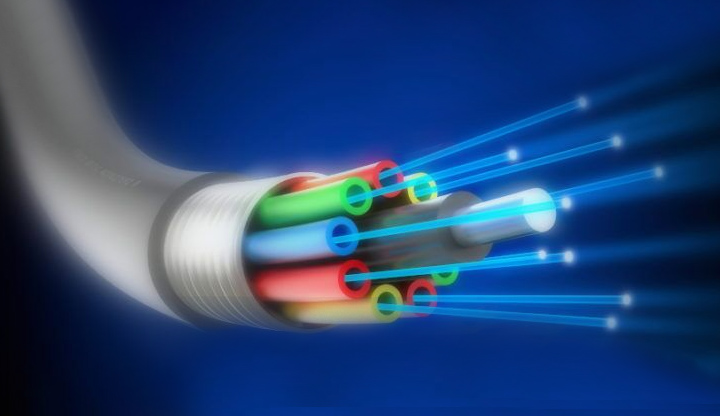
Cable provides protection for the optical fiber or fibers within it appropriate for the environment in which it is installed.
Fiber optic "cable" refers to the complete assembly of fibers, other internal parts like buffer tubes, ripcords, stiffeners, strength members all included inside an outer protective covering called the jacket. Fiber optic cables come in lots of different types, depending on the number of fibers and how and where it will be installed. It is important to choose cable carefully as the choice will affect how easy the cable is to install, splice or terminate and what it will cost.
Cable's job is to protect the fibers from the environment encountered in an installation. Will the cable become wet or moist? Will it have to withstand high pulling tension for installation in conduit or continual tension as in aerial installations? Does it have to be flame-retardant? Ultra flexible? Will the cable be exposed to chemicals or have to withstand a wide temperature range? What about being gnawed on by a woodchuck or prairie dog? Inside buildings, cables don't have to be so strong to protect the fibers, but they have to meet all fire code provisions. Outside the building, it depends on whether the cable is buried directly, pulled in conduit, strung aerially or whatever.
All cables are comprised of layers of protection for the fibers. Most all start with standard fiber with a primary buffer coating (250 microns) and add: Tight buffer coating (tight buffer cables like simplex, zipcord, distribution and breakout types): A soft protective coating applied directly to the 250 micron coated fiber to provide additional protection for the fiber, allowing easier handling, even direct termination on the fiber. Loose Tubes (loose tube cables): Small, thin plastic tubes containing as many as a dozen 250 micron buffered fibers used to protect fibers in cables rated for outside plant use. They allow the fibers to be isolated from high pulling tension and can be filled with water-blocking materials to prevent moisture entry. Strength members and stiffeners: Usually aramid yarn, the same used in bulletproof vests, often called by the duPont trade name Kevlar, which absorbs the tension needed to pull the cable and provides cushioning for the fibers. Aramid fibers are used not only because they are strong, but they do not stretch. If pulled hard, they will not stretch but eventually break when tension exceeds their limits. This ensures that the strength members will not stretch and then relax, binding the fibers in the cable. The proper method of pulling fiber optic cables is always to attach the pull rope, wire or tape to the strength members. Some cables also include a central fiberglass rod used for additional strength and to stiffen the cable to prevent kinking and damaging the fibers. When included, these rods should be attached to swivel pulling eyes. Jacket: The outermost layer of protection for the fibers that is chosen to withstand the environment in which the cable is installed. Outside cables will generally be black polyethelene (PE) which resists moisture and sunlight exposure. Indoor cables use flame-retardant jackets that can be color-coded to identify the fibers inside the cable. Some outdoor cables may have double jackets with a metallic armor between them to protect from chewing by rodents or kevlar for strength to allow pulling by the jackets. Indoor-outdoor cables have a PE outer jacket that can be removed to expose a flame-retardant inner jacket for use within buildings. Protection Against Water and Moisture: Cables installed outdoors require protecting the fibers from water. Either a gel or absorbent tape or powder is used to prevent water from entering the cable and causing harm to the fibers. Generally, this applies to loose tube or ribbon cables, but dry water-blocking is used on some tight buffer cables used in short outdoor runs, such as building to building on a campus or to an outdoor wireless antenna or CCTV camera.
